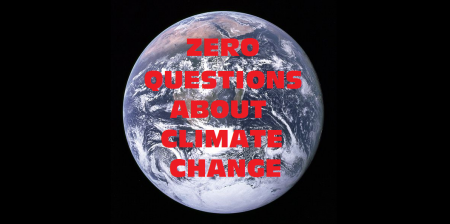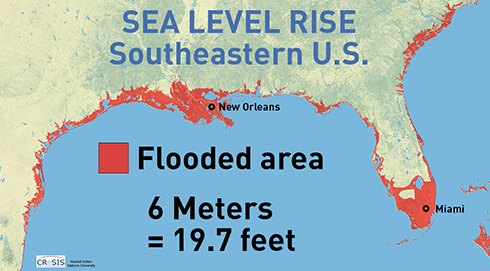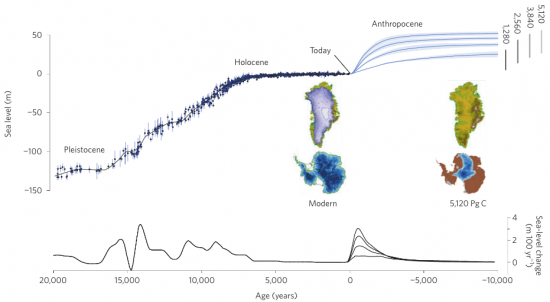October 21, 2016 – On Wednesday evening this week two old people auditioned for the most important political position on the planet, President of the United States. This was their third public face-to-face debate. What the moderator hosts asked them in all three of these public forums never included a single question about climate change, an issue that should have been of prime interest and one that haunts young people like no other.
Why is that?
Because climate change is what will impact them not just in the near future but in decades to come. Climate change will impact their careers, families, communities and their children’s children to follow. Young people will make family planning decisions based on concerns about the environment in which they bring up their sons and daughters. They may have to move from the cities of their birth as the climate alters these familiar places. Imagine if you are a young person living in New Orleans, Louisiana, Miami, Florida, or Norfolk, Virginia. Is there a future for you and your offspring in these places as sea levels rise?
Climate change is a present, near future and longer-term future problem. Youth get this but adults, not so much.
As a member of the baby boomer generation I watched in amazement as 4-1/2 hours of debate between Hillary Clinton and Donald Trump never broached the subject other than in a passing line or two. No questions were asked by a panel of respected network journalists. No policies were proffered by either candidate.
In a commentary written by Lucia Oliva Hennelly, of the Environmental Defense Fund, she writes, “To avoid drowning in rising seas or dying of thirst due to dry wells, our generation must get involved in politics to defend our common future.” So one wonders why network journalists didn’t or weren’t prepared to ask a question about climate change and climate policy?
When we think about the climate change we are living in today it is hard to imagine what the future will be like. We can track the steady rise in mean atmospheric temperatures, always small incremental changes. We can measure rising sea levels in millimeters each year and think little of it. We can watch the carbon dioxide and other greenhouse gases grow in our atmosphere and note the new highest recordings in human history. And we can have our political leaders gather and sign treaties that set reduction targets for those gases and pat themselves on the back that their signatures means we’ve got the issue covered.
Scientists will tell you another story and they have been holding out on us because the truth of our climate change driven future is far more difficult to imagine. I’m not sure anyone of us is prepared to deal with what that will be. You see there is an environmental latency inherent in greenhouse gas impacts. That latency will mean that even if we get to net zero carbon by mid-century, or by the end of the century, the effects of climate change will linger for thousands of years.
In an article appearing in Scientific American this month, Robert Wilder and Daniel M. Kammen describe the latest research by climate scientists that paints a very different picture than that appearing in International Panel on Climate Change (IPCC) reports. IPCC largely confines its findings to the end of the century telling us estimated minimums and maxium degrees of warming and centimeters of sea level rise anticipated by various climate modelers. Beyond 2100 we are largely left in the dark.
What doesn’t get mention or is downplayed is the lingering carbon impact of our 20th and 21st century industrial economies. That impact doesn’t stop when we get to a net carbon zero economy. All we are accomplishing is neutralizing further contributions of carbon to the atmosphere and oceans when we get to zero. What’s already in the atmosphere and oceans remains and not for a century but for many centuries if not thousands of years. In human terms when we talk about thousands of years we are, for all intent and purposes, describing a “forever” legacy. Wilder and Kammen draw these conclusions from a paper appearing in Nature Climate Change entitled “Consequences of Twenty-First-Century Policy for Multi-Millennial Climate and Sea-Level Change.” The authors of this paper project the impact of anthropogenic climate change in terms of ten millennia and beyond. This is the estimated time period impacted by our 20th and 21st century carbon-based industrial economies. The researchers don’t talk in terms of annual incremental changes measured in fractions but rather provide the full story of where we are headed.
In the study the authors talk about a number of 21st century scenarios as we begin to dial down our carbon emissions. Between 1,280 Gigatons of net new carbon added to the atmosphere translating to a 2 Celsius mean global temperature rise, and 5,120 Gigatons (which is business as usual today) and a 7.5 Celsius rise we can plot consequent sea level changes. At 2 Celsius over the long run we see a thermal expansion of the ocean contributing 1.1 meters of rise. Then we add in alpine glacier, Greenland and West and East Antarctic ice sheet melts we can anticipate 29 meters in sea level increase.
If we continue, business as usual, which means 7.5 Celsius warming then thermal expansion of the ocean will lead to a minimal 2.8 meter rise. Further melting of alpine glaciers, Greenland and Antarctica ice sheets will then produce as much as a 55 meter rise. In this latter scenario Antarctica and Greenland would be ice-free within 2,500 years and all small alpine glaciers from the Andes and Rockies to the Himalayas would vanish.
The research models as depicted in the graph below point to the full extent of warming and sea level rise lasting 10,000 years with rapid sea level front-end loaded. In other words having a bigger impact within the first few centuries.
Maybe such dire forecasts are just not something politicians want to talk about. And maybe the press is complicit in not wanting to talk about it either. But young people do and they want to know what their current leaders intentions are.
In a previous posting I stated that environmental activists are girding up for war with the fossil fuel industry to put a stop to future extraction and production. Largely youth based, through social media action groups they are organizing to pressure government decision makers to cap carbon emissions at a much faster rate than any policy makers currently plan. The new civil rights movement of the 21st century for these young people is a call for climate justice.
At the three presidential debates over the last several weeks, climate change was barely talked about and climate justice was not served. So what will it take?
Wilder and Kammen in their Scientific American article state, “The point here is that 2100 shouldn’t be regarded as a terminal year. To do so is folly, a fallacy in thinking. Life goes on, people do not end there, and seas will not suddenly halt their rise then.” They note that scientists aren’t dramatizing their findings. They are just studying the past climate when warming episodes occurred and projecting this Earth geological record into the future.
Can politicians put adaptation and mitigation strategies into play so that a Norfolk, New Orleans, Miami, Boston and New York City don’t disappear under water.? What would be the cost of building a seawall 29 meters high around existing continents to deal with the best case scenario as described above? Better yet, wouldn’t it make sense to get to net zero carbon not in 2050 or later, but by 2030 (14 years from now)?
The Paris agreement and the politics of climate change to-date has led to a non-binding Paris agreement. It will not achieve net-zero carbon by 2030. It will not meet the 1.5 to 2.0 Celsius warming target.
Cap-and-trade, the market-based carbon reduction solution, is too slow a mechanism to lower carbon emissions to net-zero by 2030.
A carbon tax that makes C02 dumping into the atmosphere so expensive it changes fundamental human behavior is our best mechanism to net-zero.
Meanwhile we need a concerted investment in research and development to produce scalable and affordable technology to remove carbon from the atmosphere and ocean so that we get below net-zero carbon.
One way or another our political leaders need to be doing real things about climate change and young people are going to hold them to account.


















